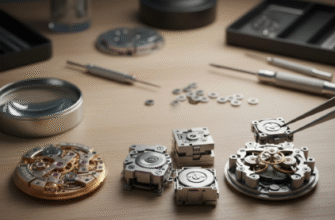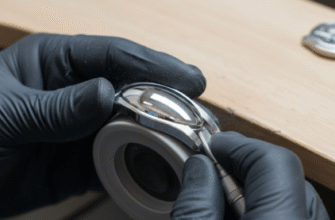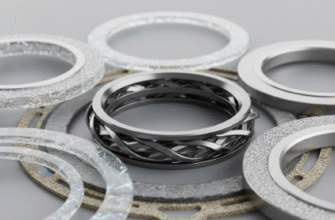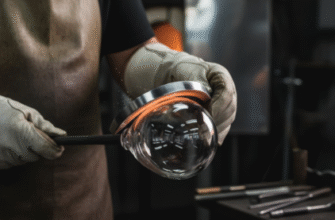At the very core of every mechanical watch, hidden from view, lies a component that is both beautifully simple and deceptively complex: the mainspring. It is the powerhouse, the beating heart that stores all the energy required to drive the intricate dance of gears, levers, and wheels that measure the passage of time. Without it, a mechanical timepiece is nothing more than a static piece of jewelry. Its role, however, extends far beyond merely holding energy; its true challenge and the mark of horological excellence lies in its ability to deliver that energy with unwavering consistency.
Think of the mainspring as the watch’s battery. But unlike a chemical battery that provides a relatively stable voltage, a spring is a purely mechanical device. It is a long, thin ribbon of a special metal alloy, coiled tightly and housed within a cylindrical drum called the barrel. When you wind the crown of a watch, you are directly tightening this coil, forcing it into a more compact state. This action stores potential energy within the spring’s material structure, much like stretching a rubber band. The spring’s natural tendency is to return to its relaxed, uncoiled state, and it is this unwinding force, or torque, that powers the entire watch movement.
The Fundamental Problem: Inconsistent Torque
Herein lies the greatest challenge that has vexed watchmakers for centuries. A simple spring does not unwind with a consistent force. When fully wound and coiled tightly, its desire to expand is at its strongest, meaning it delivers a high amount of torque. As it gradually unwinds, the force it exerts diminishes. This drop-off in torque is not linear and can be quite significant. If this variable force were delivered directly to the timekeeping elements, the watch’s accuracy would be abysmal. The high torque at the beginning would cause the balance wheel to oscillate too quickly, making the watch run fast. As the mainspring wound down, the lower torque would cause the balance wheel’s amplitude to decrease, making the watch run slow.
This issue, known as the lack of isochronism (the property of having a period of oscillation that is independent of amplitude), was the primary obstacle to creating accurate portable timekeepers. Early watchmakers had to devise ingenious, and often very complex, mechanisms to tame the mainspring’s wild and inconsistent power delivery.
Early Solutions to Tame the Spring
One of the most brilliant and visually striking solutions was the fusee and chain mechanism. The fusee is a cone-shaped pulley with a spiral groove cut into its surface. A tiny, delicate chain connects the mainspring barrel to this cone. When the mainspring is fully wound (high torque), the chain pulls from the narrowest part of the fusee cone. This provides less leverage, effectively reducing the force transmitted to the gear train. As the mainspring unwinds and its torque weakens, the chain pulls from progressively wider sections of the fusee cone. This increased leverage compensates for the spring’s declining strength, resulting in a remarkably consistent torque output. While effective, the fusee was complex, fragile, and expensive to produce, eventually falling out of favor in most wristwatches.
The fusee and chain mechanism is a classic example of applying the principle of a lever to solve a complex horological problem. The changing radius of the fusee cone acts as a continuously variable lever arm. This ensures that the force delivered to the escapement remains nearly constant throughout the watch’s power reserve, dramatically improving timekeeping accuracy in early timepieces.
Another, less common method was the stackfreed, a system primarily used by early German watchmakers. It consisted of a kidney-shaped cam and a spring-loaded roller. The cam, mounted on the barrel arbor, would press against the roller, creating a variable braking force that opposed the mainspring. The shape of the cam was designed to apply maximum braking force when the spring was fully wound and gradually reduce this friction as the spring unwound, smoothing out the torque curve.
The Modern Approach: The Triumph of Metallurgy
While mechanical compensators like the fusee are marvels of engineering, the modern solution to the torque problem is found not in added complexity, but within the mainspring itself. The revolution came through advances in metallurgy. Early mainsprings were made of carbon steel, which was brittle, prone to rust, and had a very steep torque curve. They were also susceptible to “fatigue,” meaning they would lose their springiness over time.
The 20th century saw the development of incredible new alloys that changed everything. Materials like Nivaflex, a sophisticated alloy containing cobalt, nickel, chromium, iron, tungsten, molybdenum, and beryllium, transformed the mainspring from a problematic component into a highly reliable and efficient power source. These modern alloys are:
- Anti-magnetic: They are not affected by magnetic fields, which can disrupt a watch’s accuracy.
- Corrosion-resistant: They will not rust or degrade over time.
- Highly elastic: They can be coiled and uncoiled millions of times without losing their properties or breaking.
Most importantly, these alloys were engineered to have a much flatter and more stable torque curve. While no spring is perfectly consistent, a modern mainspring can deliver a near-constant force for the majority of its unwinding cycle. Watchmakers design the movement to operate within this optimal range, or “sweet spot,” of the spring’s power reserve. The first few hours of high torque and the last few hours of low torque are effectively ignored, ensuring the escapement receives a consistent impulse for as long as possible.
In vintage watches that lack a “slipping bridle” or clutch mechanism in the barrel, it is possible to over-wind the mainspring. Continuously turning the crown after feeling firm resistance can strain the mechanism and potentially break the spring’s hook or the spring itself. Modern watches, especially automatics, have a slipping clutch that prevents this from happening.
Delivering the Power: From Barrel to Balance
The consistent torque from the mainspring barrel is the first step in a long journey of energy transfer. The barrel’s outer edge has gear teeth that engage with the first wheel of the gear train, often called the center wheel. This energy is then transferred sequentially through the third wheel and fourth wheel, with each gear turning faster than the last. Finally, this rotational energy reaches the escapement. The escapement is the critical component that “escapes” the energy from the mainspring in tiny, precisely controlled, incremental bursts. It is this mechanism, working in tandem with the oscillating balance wheel, that creates the familiar ticking sound of a watch and governs its rate. The consistency of the torque delivered by the mainspring is paramount, as it directly affects the amplitude of the balance wheel’s swing, which in turn dictates the accuracy of the entire timepiece. A stable torque means a stable amplitude, and a stable amplitude means precise timekeeping.








